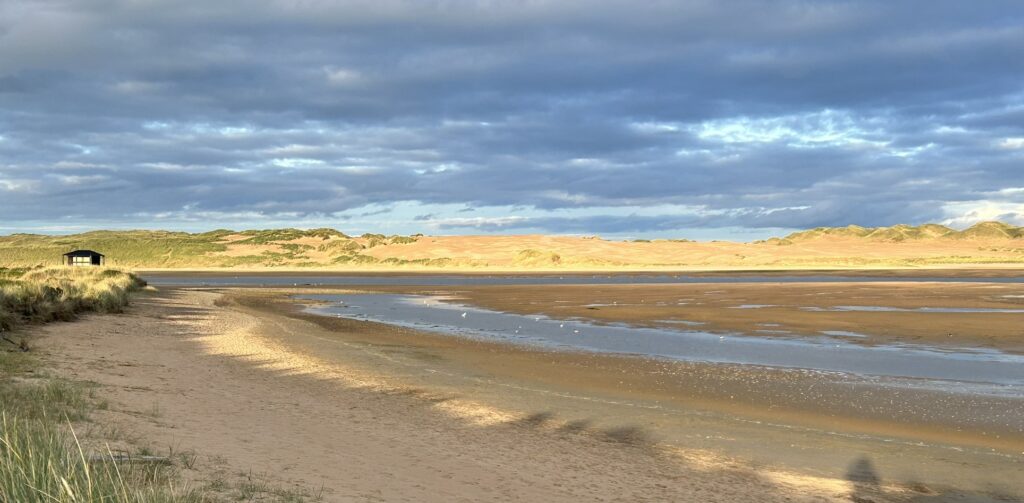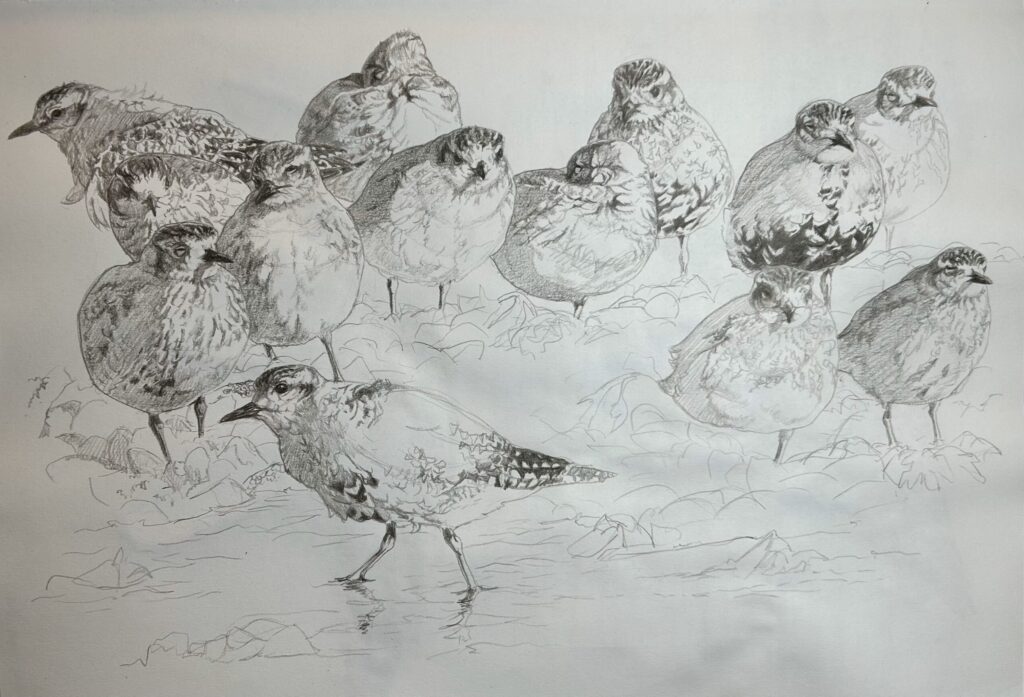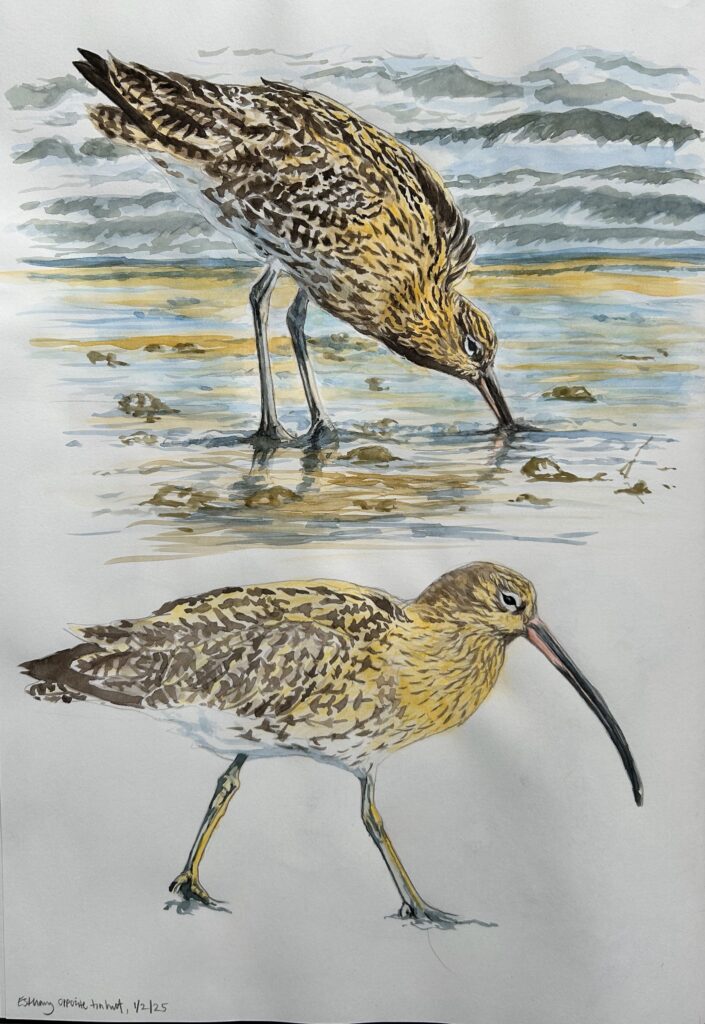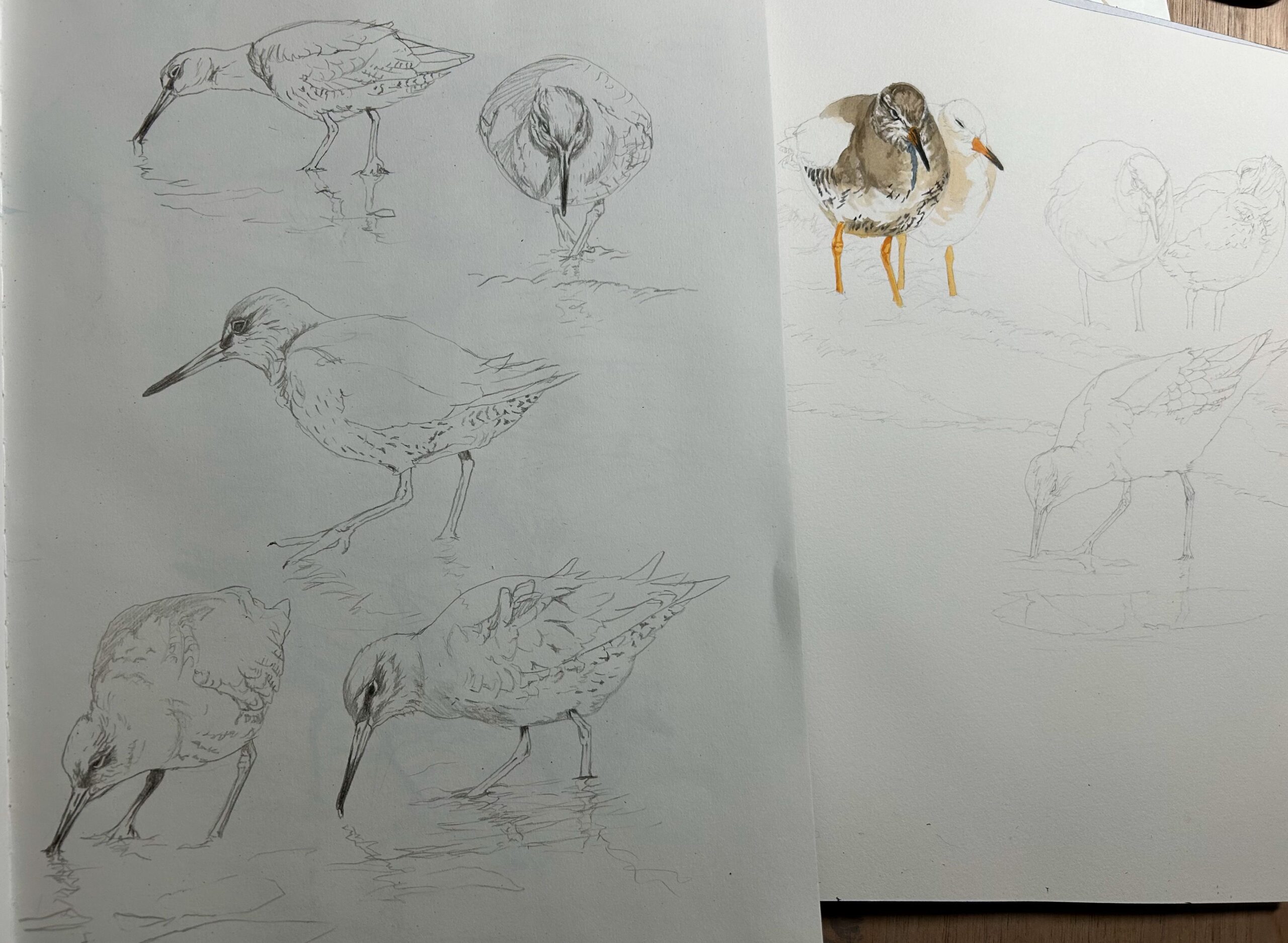
Arrived at the beach car park from Banchory and dropped off by Innes at 10am on a windy but largely bright morning. The stiff wind that was blowing was from the Southeast and pretty chilly with it and it was forecast to get stronger by lunchtime. With this in mind, I decided to seek a more sheltered location and headed slightly inland where there is a viewing shelter that overlooks the estuary. It is a simple structure, more akin to a big bus shelter and is affectionately called ‘the tin hut’. It is a wooden structure, opening out to two directions (one facing south, overlooking the golf course and other facing north overlooking the estuary) with corrugated iron sides and roof with a bench along the back wall to sit on. It is far from luxurious but has a fantastic view of the estuary and Forvie dunes opposite and offers much-appreciated protection in bad weather or strong winds like today!

The tide on my arrival was at its lowest and most of the action was happening out on the invertebrate-rich mud/sandflats. Although they were all quite distant, the rising tide would eventually push them closer towards the tin hut. As I reached the shelter, I noticed a flock of golden plover out roosting on a shingle/mussel bank just along the shore a little. I went further along the shore to be opposite them and thankfully they were not too distant, and I could get a decent look at them. I settled on a bench backed by thick gorse bushes and it was relatively sheltered thankfully. I counted 151 plovers present, most facing the wind roosting and preening but some feeding and bathing in small tidal puddles. The sun regularly popped out from behind the clouds and was forming some nice shadows amongst the flock. The sunshine also highlighted some of the plovers, with their yellow and black breeding plumage starting to come through.

The wind had really started picking up after a couple of hours of being at the plovers and it was much colder, so I moved on to the shelter of the tin hut. The timing worked out quite well too as the tide gradually started pushing waders towards me. The sun was still throwing strong, low light onto the birds as I sketched them with the strong wind whipping past the side of the shelter.


Eider numbers have also noticeably increased slightly now since my last visit, with 25 on the river/shore in my field of view. Drakes are starting to group around the ducks now too, with their distinctive display of throwing back their heads at them. Lots more of their even more distinctive Frankie Howerd-esk ‘aooooohh’ calls ringing out around the estuary! Several pairs of mergansers were also doing their courtship displays, although they were more distant out on the opposite side of the river.
I left absolutely freezing with the tide at its highest and everything all but departed but I was staying at the Newburgh Inn tonight this time and a warm, comfy room awaited! I was also grateful for the flasks of pasta and coffee my wife gave me this morning, as I don’t think I would’ve lasted as long as I did in the tin hut without them!

INNER THOUGHTS: Trying not to think of anything too much really, just enjoying the therapeutic effect of being out in nature – despite the weather and being huddled in the corner out of the wind in the tin hut!

